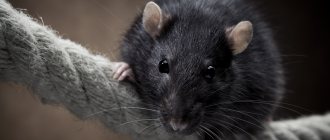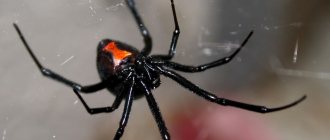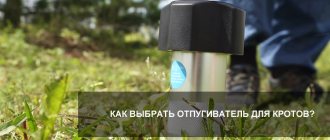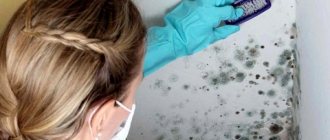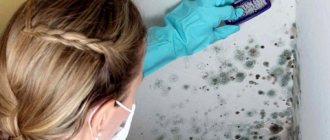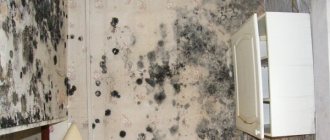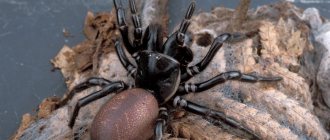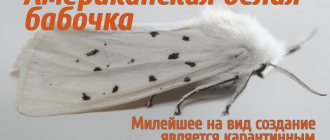In spring, nature awakens, and summer residents rush to start working on their plots. The first leaves on roses and fruit trees, as well as seedlings that are finally moving into the open ground - all this cannot but rejoice. But it’s too early to relax: if you turn over this curled leaf, you can see aphids. This insect is a gourmand, preferring young shoots and sprouts, and can cause serious harm to the plant, slow down its development and deprive summer residents of a significant share of the harvest. This means that aphids need to be fought.
general information
Aphids settle on plants and begin to suck the juices out of them, forming necrotic areas .
One single individual will not cause serious harm, but the problem is that small pests multiply quickly and form numerous colonies. In this regard, it is necessary to take various methods and methods of struggle.
The larger the aphid population, the more plants will die due to their activity. Some species are even considered quarantine pests , for example, grape phylloxera. You can see what different types of aphids look like in the photos posted in our article.
Other varieties produce galls and other plant development pathologies.
Reproduction and lifespan of aphids
There are aphids that lay eggs. But there are also insects that are called viviparous. Parthenogenesis is inherent in many species of these insect pests. Some of the aphids come into the world with wings and different sexes. Others are the opposite.
A major role in the continuation of the aphid species is played by winged individuals, who do not allow their own kind to die of hunger, but move to new territories in search of food for themselves.
Scientists have noticed that winged aphids often appear if, for example, there are a large number of ladybugs in the area. The whole process is very complicated. But if we briefly try to explain it, then everything happens as follows.
The ladybug finds its prey and eats it. As a result, the aphids produce a specific aromatic substance, which is captured by all aphids in the colony. This causes panic. In such a panic, more aphids with wings are born.
This insect is not long-lived. Aphids can live for several days or months. With the onset of frost, it all dies. Except for the one that was given shelter by the rescue ants.
Peach
There are two known subspecies - the large peach aphid and the greenhouse (also known as tobacco and green) aphid.
Big
The founder has a rounded body of a brownish-gray color, up to 5 mm long. The head is black with short antennae. There are two tubercles on the abdomen and chest. The male is the same color, but smaller in size. There are no wings .
The winged virgin is distinguished by its shorter body length - up to 4.5 mm, the color of the head and chest is black, the back and abdomen are gray and brown. The wingless virgin has a gray pear-shaped body, covered, like its head, with black spots. The legs are bright - yellow and orange.
The eggs are initially orange in color , which gradually darkens and turns brown. After a few days it darkens, the eggs turn black.
- Geographical distribution. Steppe regions and Crimea.
- On what plants is it found? Prefers fruit and nut trees - cherry plum, peach, almond, apricot, plum.
- Features of development and life cycle. They have a monoecious development cycle. Large clusters of eggs are sent to winter, located on the inside of large branches and under the bark of the trunk. In April, the larvae appear and begin to actively feed, going through the development cycle to an adult within a month.
From the founder, 50-80 larvae appear, from wingless virgins, on average - 30. The third and subsequent generations reproduce very intensively. Winged virgins appear in mid-summer and begin to actively fly to other trees, forming new colonies.If no action is taken, by August aphid populations will completely cover all the trees in the garden, settling on the inside of leaves and branches. During the season, 8-10 generations of the pest are formed. Males are born in the fall and fertilize females to produce overwintering eggs.
- What harm does it cause? By sucking juices from trees, aphids cannot completely destroy the plant. However, its activity weakens the tree’s defenses, which leads to the development of various viral diseases. In addition, it gives way to sooty fungi that settle on the sweet secretions of aphids. Externally, a fungal invasion appears as black wet spots.
Green or tobacco peach
The founder has an oval body , greenish-yellow in color, sometimes with a pink tint. It reaches no more than 2.5 mm in length.
The wingless virgin is smaller in size, the body is colored pink, green-yellow or light green. The eyes are red, the antennae are light and short . The average length is 1.5 - 2 mm.
The winged virgin differs from the wingless one; the main color of the body is yellow-green, the head and chest are black. The wings are colorless and transparent.
The eggs are elongated and elliptical in shape. The color is black with a metallic sheen.
- Geographical distribution. North America, Asia (especially Japan, China and India), Eastern and Western Europe, Southern Urals.
- On what plants is it found? A very indiscriminate species that lives on peaches, cherry plums, plums, tobacco, cabbage, cucumbers, eggplants, potatoes, peppers, radishes, dill and parsley, lettuce and many other plants, including greenhouse crops and medicinal herbs.
- Features of development. Development is fully cyclical or incompletely cyclical (during life in greenhouses). Foundress larvae emerge from overwintered eggs in March - April. The air temperature should be at least 20°. They begin to feed on the kidneys. Development to a sexually mature individual from 18 to 28 days. The founder gives about 30-60 eggs of offspring. The maximum increase in population is observed in mid-summer. Up to 12 generations can develop during a season. The eggs spend the winter at the base of the buds.
- What harm does it cause? The most significant damage is observed on young shoots and various vegetable crops, as well as tobacco. Leaves curl, wrinkle, and dry areas appear. It is very harmful to flowers, which as a result dry out and fall off.
Harm to humans
Aphids are a dangerous pest that causes enormous damage to agriculture. Colonies of small insects can destroy entire fields. There are several reasons why aphids appear:
- insects can enter the site by flying in in search of a place for a new colony;
- perhaps plants were planted that were already infested with insects;
- The larvae could be brought by the wind, an animal on fur, a person on clothes, a bouquet of flowers, or tools.
Affected plant
Damage from aphids that have settled on the site:
- due to the fact that the pest feeds on the sap of plants, they begin to wither, dry out, leaves turn yellow and fall off, growth, formation and growth of fruits slows down or stops;
- sweet honeydew secreted by aphids attracts other insects, some of which may be harmful;
- toxins released by aphids during their life processes negatively affect plants, causing deformation of shoots and buds;
- sweet secretions contaminate the leaves and contribute to the appearance of sooty fungus;
- aphids carry many phytopathogenic viruses, causing infection and plant diseases.
To preserve the plantings and get a harvest, it is necessary to take measures to destroy the pest. An integrated approach, including the use of chemicals and folk remedies, will help to achieve maximum effect.
Potato large
The wingless virgin has an oval body , pointed at the rear. It is colored red or green. Length no more than 4 mm. The antennae and tail are long and match the color of the body.
The winged virgin is small, up to 3.5 mm long. The body is light green, the legs and antennae are chestnut.
- Geographical distribution. Almost everywhere. Originally appeared in North America.
- On what plants is it found? As a polyphage, it is omnivorous, but prefers potatoes, tomatoes, cabbage, beets, as well as greenhouse and indoor plants.
- Features of development. Incomplete development cycle. Reproduction is only parthenogenetic.
In spring, wingless individuals appear and settle on the inner side of leaf blades of forage crops. Overwintering occurs on weeds and in the soil or in warm rooms.During the season there is a constant change of wingless and winged generations. All other forms are missing.
- What harm does it cause? This type of aphid can spread about 50 types of viral diseases.
Nutrition
The diet of aphids consists of plant juices rich in carbohydrates and amino acids. This is how both growing larvae and adult aphids feed. The overwhelming majority of species are very unpretentious and can feed on any plants located in a park, garden, vegetable garden, forest or field. Only some species are selective and drink the juices of only certain grasses, shrubs, trees, agricultural or forage crops.
It is difficult to list what aphids eat, because the list will be huge. It is much easier to name plants that do not attract her and even repel her. Among them:
- garlic;
- onion;
- fennel;
- mustard;
- chives;
- mint;
- lavender;
- marigold.
It is these crops that gardeners plant to drive away small pests from the site and protect the future harvest.
Apple green
The egg is light greenish, gradually darkens until it becomes black. The founder has an oval body with a sharp rear tip. Colored green, head reddish or chestnut.
The wingless virgin is very similar to the founder. The winged virgin is smaller in size and has a green belly. The paws, tail, chest and head are black.
The amphigonic female does not have wings; the body is yellow with a brown or green tint. The tail and ends of the antennae are black. The male differs from the amphigonic female only in its smaller size.
- Geographical distribution. Eastern Europe, Caucasus and Central Asia.
- On what plants is it found? Prefers pome fruit trees - cotoneaster, apple trees, medlar, pears, quince, shadberry, rowan, hawthorn.
- Features of development. During the season, several generations are replaced, differing morphologically. Foundress larvae emerge from the eggs during the period of leaf bud opening.
One individual produces up to 120 wingless virgins. Their development period is 9-13 days. In June, winged individuals appear and begin to spread the population to different trees.The number of generations depends on the climate and ranges from 6 generations in cold regions to 17 in hot regions. Mating and laying of overwintering eggs occurs in October.
- What harm does it cause? Young seedlings suffer the most. But even mature trees suffer quite a lot of damage. Leaves curl, spots form on fruits, branches and shoots become deformed.
Look at the photo to see what apple green aphids look like.
Read about the fight against aphids with folk remedies here.
Signs of plant infestation by aphids
The wilting of young leaves and buds is the first and surest sign that the plant has some kind of parasite. Even without seeing the pest, you can understand from the wilting symptoms that not all is well with the plant. At the same time, more mature leaves remain untouched - any pest chooses to feed on young, tender and juicy tissues, which are easily digestible and which are easier to pierce with the proboscis.
Proboscis injection sites. Upon closer inspection, dots surrounded by dead tissue can be found on the affected shoots. Damaged branches, continuing to develop, become bent, and the buds become deformed.
Honeydew. One hundred percent “evidence” is the presence on the plant of a sticky secretion of aphids, the so-called honeydew. If the branches and leaves are sticky to the touch, you can say with confidence that the flower has been attacked by aphids. Aphid secretions are not poisonous.
Ants. For the sake of honeydew, some species of ants have learned to “graze” aphids. The presence of ants on a plant can serve as an indirect sign of aphid infestation. In addition, ants can bring their aphid “cows” to “pastures” suitable for feeding.
[!] Fighting ants in the house is also a preventive measure against aphids.
Aphids are bred only by black ants, the so-called myrmeca. Predatory red ants, Formica, consider aphids only as prey.
Rose green
All forms and stages of development are not very different from each other. Any individual has an ellipsoidal green body , long brown antennae, and a sword-shaped elongated tail.
- Geographical distribution. Lives almost everywhere.
- On what plants is it found? In addition to roses and rose hips, aphids can settle on strawberries, pears and apple trees.
- Features of development. It goes through a full cycle. Overwinters on branches in the egg stage. Foundresses produce an average of about 80 eggs each. It reproduces in greenhouses and conservatories all year round.
- What harm does it cause? The growth of bushes is inhibited, the leaves curl, the buds do not open, weakened plants do not tolerate winter cold and virus attacks.
Leaf gall
Wingless females have an oval body , colored yellow or pale green. The antennae are long and dark. Winged females are much smaller and have a pair of transparent wings. The body is brownish-brown.
- Geographical distribution. Everywhere.
- On what plants is it found? White, red and black currants.
- Features of development. Full cycle.
- What harm does it cause? By sucking the juices from the leaves, it forms galls on them - swellings of burgundy or yellow color. Young bushes are damaged the most; the population can destroy the plant.
To protect plants, you can use chemical agents to control aphids.
What to do if aphids appear on the leaves?
For many gardeners and amateur flower growers, this is one of the most pressing issues. This is only initially and to people who have not encountered this problem, it may seem that there is nothing complicated about it.
In principle, an ordinary soap solution is destructive for aphid pests. The problem arises because a large number of aphids causes the plant to change its external characteristics.
The insect sucks out all the juices from it, causing its leaves to curl into a tube. It is in such twisted leaves that aphids find refuge. Therefore, it is necessary to fight it even before the leaves bloom on the trees.
It is better to treat them in the spring, as soon as the swelling of the buds is noticeable. When declaring war on aphids, you must not forget about ants and also use drugs against them.
Getting rid of ants is not difficult. This is done using padding polyester, in which the tree trunk is wrapped. The synthetic winterizer must first be treated with a chemical against ants. Currently, there is a large selection of such funds. “Aardeater” is considered to be often used.
Some gardeners try to get rid of aphids mechanically. They remove it with their hands and a stream of water under strong pressure. This is the only way to get rid of pests found on low-growing plants.
You can make sure that in an area with a large number of aphids there are those who can easily deal with them. These include ladybugs, some types of wasps, hoverflies, and lacewings. For many birds, aphids act as a treat. They can be attracted by birdhouses and special bird feeders.
Aphids react negatively to the aromas of some plants. You can sow mint around the area, marigolds and aphids will slowly begin to clear out of this area. This insect does not like the smell of garlic, cilantro, fennel, and basil.
There are many chemicals, the use of which gives positive results in the fight against aphids. Among them, we can highlight such aphid remedies as “Fitoverm”, “Aktofit”, “Jaguar”. Each of these drugs has its own spectrum of action and instructions for use.
Beet or bean
The egg is black, elliptical . The founder and the wingless virgin have an oval body, widened at the sides.
It is colored brown, black or green, covered with a wax-like coating. Winged individuals have a black head, antennae and chest, and a lighter belly.
- Geographical distribution. Europe, North America, Central Asia and Transcaucasia.
- On what plants is it found? Prefers beets, jasmine, euonymus, beans, poppy, viburnum, spring vetch, sunflower and potatoes.
- Features of development. Alternation of generations throughout the growing season of food plants, the last generation mates and lays wintering eggs.
- What harm does it cause? The leaves wrinkle and curl, the plant is stunted in growth and may die. Carries various viral diseases.
Cucumber (melon)
The elongated body with a sharp rear tip is colored in different shades of green. The antennae and paws are black.
Melon aphid photo.
- Geographical distribution. Everywhere.
- On what plants is it found? Melons, cucumbers, beets, cotton, tobacco, peanuts, sesame, citrus fruits, eucalyptus.
- Features of development. Parthenogenetic reproduction, development is incompletely cyclical. Several generations of asexual virgins change over the course of a season. Fertility - 40-50 individuals per female.
- Harm caused. This variety is one of the most harmful. Causes great damage to plants due to high fertility.
Cabbage
It has a broad oval pale green body and short dark antennae.
Cabbage aphid photo.
- Geographical distribution. In almost all countries, in Russia it is absent in subtropical regions.
- On what plants is it found? It lives mainly on cruciferous vegetables, especially likes radishes and cabbage.
- Development. In warm climates, development is incomplete, in other areas - a full cycle. During the season, from 6 to 30 generations appear.
- What harm does it cause? Reproducing en masse, it adheres to the entire plant, which leads to death.
Grape phylloxera
The body is oval, yellow or brown in color. The antennae and proboscis are very short.
- Geographical distribution. Viticulture areas in Europe, North America, Africa and Asia.
- On what plants is it found? Lives only on all types of grapes. The leaf form does not settle on pubescent varieties.
- Development. Root and leaf forms go through a full cycle. One leafy female can produce up to 500 eggs. Up to 9 generations change per season.
- What harm does it cause? Phylloxera is a quarantine pest. Galls appear on the roots and deformation appears on the leaves. The population is capable of completely destroying the vineyard.
Other folk methods of pest control on trees
Many people are interested in how to protect trees from aphids. Now let's look at some other means that will help in the fight against this pest. These include:
- Nettle: pour 250 grams of leaves with one liter of water. After a day you can use it for its intended purpose.
- Horse sorrel: finely chop the root of a perennial herb and add warm water at the rate of 300 grams of product per 10 liters of water. This mixture should be infused for at least three hours.
- Orange peels: pour 1 kilogram of the dried surface layer of orange with warm water (10 liters) and leave the resulting mixture for three days before use.
- Yarrow: pour fresh perennial plant with water at the rate of 2.5 kg per 10 liters, boil for thirty minutes before straining.
- Garlic and onion peels: pour 3 liters of boiling water into a tightly packed 250-gram glass with the top shell of garlic and onion in a one-to-one ratio and leave for four hours. Then strain and dilute the mixture with water (10 liters) before spraying the infected plant.
Carrot
The elongated oval body is pale green in color, the antennae are short and light, as are the paws.
- Geographical distribution. Everywhere.
- On what plants is it found? On carrots and other umbrella plants.
- Development. Full life cycle.
- What harm does it cause? The leaves curl, the nutrition of root crops deteriorates, so the quality and quantity of the harvest suffers.
Hermes
The founder has a black shiny body. Subsequent generations are covered with white fluffy hairs.
- Geographical distribution. Everywhere where there are coniferous trees.
- On what plants is it found? Any conifers, especially spruce, pine, larch and cedar.
- Development. Incomplete. 4-5 generations appear per season.
- Maliciousness. They disrupt the development and fruiting of trees, weakening their protective abilities and reducing their decorative properties.
Mealy (hairy)
The wingless female has a pinkish-cream body and an oval shape. There are numerous bristles on the sides. The entire body is covered with a snow-white coating, reminiscent of flour.
The winged female differs from the wingless one only in the presence of wings.
- Geographical location. Everywhere.
- On what plants is it found? Prefers citrus fruits, grapes, most indoor and greenhouse plants.
- Development. The female can lay up to 2 thousand eggs, from which larvae soon emerge. They are mobile and spread over all surrounding plants, sucking the juice from them. At home and in greenhouses, development and reproduction are continuous.
- Maliciousness. Deformation of branches and stems, drying and falling of buds and leaves, inhibition of development, weakening of the protective qualities of plants.
Where do they come from?
A large number of species of aphids live in nature , and some of them have migrated to cultivated plants. What are the causes or what causes aphids?
Most often, aphids enter plantings with new plants that have not been tested for infestation. An old, unkempt area always contains a large number of aphids and infects neighboring areas.
Moreover, ants help aphids spread, transferring them to new plants.
Root
The body can be colored yellow, white or green, and is ovoid in shape. The head, antennae and chest are brown. The entire body is covered with a whitish-yellow coating similar to wax.
- Geographical location. Everywhere.
- On what plants is it found? Almost everyone.
- Development. Wingless females hibernate and hide in the soil. In the spring, larvae are born from them. They subsequently give birth to offspring. During the season, several generations and stages of development change.
- Maliciousness. By sucking juices from adventitious lateral roots, the pest disrupts the normal supply of nutrients to the plant.
As a result, it is weakened and cannot fully develop. If measures are not taken, the food plant will die.
Preventive measures
As follows from the above, preventing aphids from appearing in the house is not at all difficult. To do this, you must follow the following rules:
- All brought plants must first be quarantined, that is, kept separately from other plants, and inspected as often as possible;
- Place flowers and branches in vases as far as possible from house plants, ideally in other rooms;
- Calcinate or freeze all soil taken for flowers;
- Cover windows with mosquito nets;
- Inspect the clothes and fur of pets when entering from the street (this measure is also aimed against ticks);
- Fight black ants.
As a preventive measure, placing fragrant pelargonium (geranium) in the home flower garden can be considered. Pelargonium produces odorous phytoncides that are destructive to aphids.
Home or room
Includes several subspecies that differ in color. There are white aphids, red aphids, and there are also green and black aphids.
- Geographical location. Everywhere.
- On what plants is it found? On almost all indoor flowers.
- Development. Full cycle. Reproduction is parthenogenetic and amphigonic individuals mate periodically. They do not go to winter and develop all year round.
- Maliciousness. Leaves, shoots and buds wither and dry out and fall off. Plants stop developing and gradually die.
Lifestyle of aphids
The insect aphid prefers to live in large colonies. Its favorite habitats are on green leaves and young shoots. Ants become companions throughout their lives. This tandem benefits both of them. The aphid is under the reliable protection of the ant, which feeds on its honeydew.
It's interesting to watch their interactions. The ant approaches the aphid and, after gentle tickling, receives a portion of the sweet liquid. This droplet is transmitted along a chain to the ant’s house, where aphids often find refuge in the winter. Aphids have enemies from which the ant tries to carefully protect them. Ladybugs and lacewings can destroy aphid colonies.
